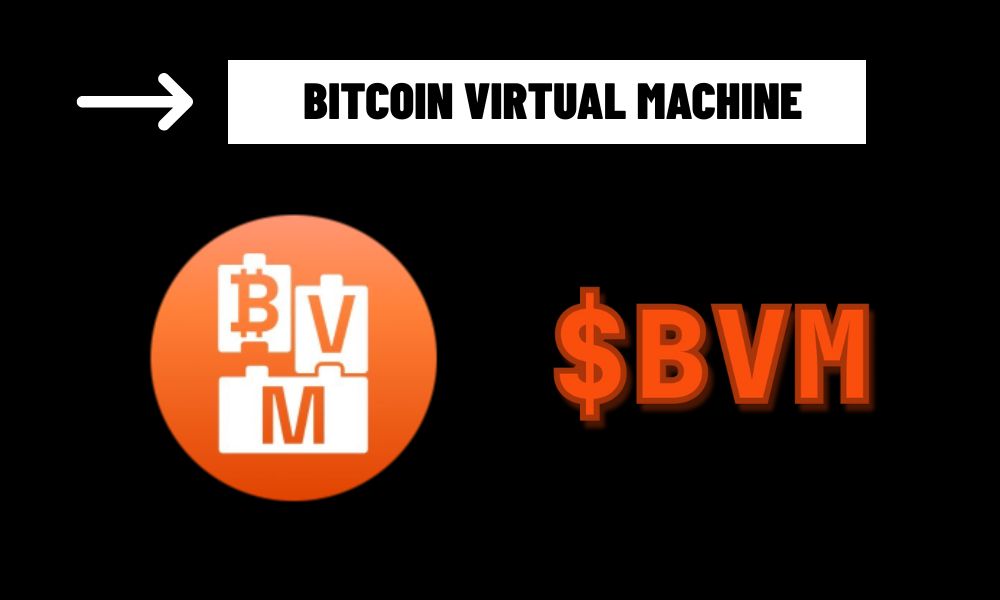The cryptocurrency landscape is undergoing a transformative shift, with the Bitcoin Virtual Machine (BVM) emerging as a groundbreaking innovation that extends Bitcoin’s utility beyond a store of value. Originally designed as a peer-to-peer electronic cash system, Bitcoin’s blockchain has long been limited by its lack of native support for complex smart contracts. The Bitcoin Virtual Machine, a layer-2 solution, aims to change this by enabling programmable, decentralized applications (dApps) on Bitcoin’s robust and secure network. This article explores the origins, functionality, and investment implications of the BVM, providing crypto investors and enthusiasts with a clear understanding of its potential to reshape the blockchain ecosystem.
What is the Bitcoin Virtual Machine?
The Bitcoin Virtual Machine (BVM) is a layer-2 protocol built on Bitcoin’s blockchain, designed to introduce smart contract functionality and programmability while preserving Bitcoin’s core principles of security and decentralization. Unlike Ethereum’s Virtual Machine (EVM), which powers a wide array of dApps, Bitcoin’s scripting language has historically been restrictive, prioritizing simplicity and reliability over flexibility. BVM addresses this limitation by creating an off-chain execution environment that processes complex computations while anchoring results to Bitcoin’s layer-1 blockchain for trustless verification.
Launched in 2024 by a consortium of blockchain developers, BVM leverages technologies like the Lightning Network and sidechains to enable scalable, Turing-complete smart contracts. By integrating with Bitcoin’s Taproot upgrade, BVM enhances transaction efficiency and privacy, allowing developers to build dApps for decentralized finance (DeFi), tokenized assets, and even NFT marketplaces directly on Bitcoin’s network.

How BVM Works
At its core, the Bitcoin Virtual Machine operates as a modular framework. Transactions are initiated on Bitcoin’s main chain, with complex logic executed off-chain in the BVM environment. Results are then settled back on the main chain, ensuring security and immutability. Key components include:
Taproot Integration: BVM utilizes Taproot’s Schnorr signatures and MAST (Merkelized Abstract Syntax Trees) to optimize smart contract execution, reducing transaction sizes and costs.
Layer-2 Scalability: By processing computations off-chain, BVM minimizes congestion on Bitcoin’s network, enabling faster and cheaper transactions.
Interoperability: BVM supports cross-chain interactions, allowing assets and data to move between Bitcoin and other blockchains like Ethereum or Solana.
This architecture makes BVM a compelling solution for developers seeking to build scalable applications without compromising Bitcoin’s unparalleled security.
Market Impact and Investment Potential
The introduction of the Bitcoin Virtual Machine has sparked significant interest in the crypto market. As of May 2025, projects built on BVM, such as DeFi protocols and tokenized real-world assets, have attracted over $500 million in total value locked (TVL), according to DeFiLlama. The native governance token for BVM, often referred to as BVM, trades at approximately $2.15, with a market cap of $1.2 billion and a 24-hour trading volume of $98 million, per CoinGecko. The token has seen a 12.4% increase over the past week, driven by growing developer adoption and partnerships with major layer-2 networks.

For investors, BVM represents a high-growth opportunity within the Bitcoin ecosystem. Its ability to unlock Bitcoin’s potential for DeFi and dApps positions it as a competitor to Ethereum and newer blockchains like Solana. However, risks remain, including regulatory uncertainty around layer-2 solutions and competition from established smart contract platforms. Investors should monitor BVM’s adoption metrics, such as developer activity and TVL growth, and exercise caution with volatile token prices.
The Future of BVM
The Bitcoin Virtual Machine is poised to redefine Bitcoin’s role in the Web3 era. By enabling programmable functionality, BVM empowers developers to create innovative applications while leveraging Bitcoin’s $1.3 trillion market cap and unmatched network security. Upcoming milestones, including mainnet upgrades and integrations with major DeFi protocols, could further drive adoption.
For crypto enthusiasts and investors, the Bitcoin Virtual Machine offers a unique blend of innovation and stability. As the ecosystem matures, BVM has the potential to position Bitcoin as not only a store of value but also a hub for decentralized innovation, making it a project to watch closely in 2025 and beyond.
